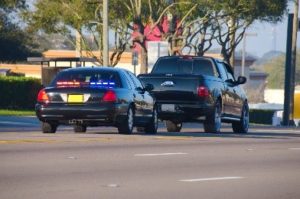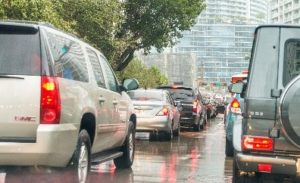By Shelia Dunn, NMA Communications Director
A fascinating study released recently by Stanford University took issue with the ‘veil of darkness’ in traffic stops. Researchers found that black drivers, who are pulled over by police more frequently during the day, are not necessarily stopped as much after sunset.
This largest-ever study found that this was just one of several examples of systematic racial profiling. Ninety-five million traffic stop records were analyzed in the five-year study. Records came from 21 state patrol agencies and 35 municipal police departments from 2011 to 2018.
The research team used the massive database by narrowing the range of variables to only include traffic stops around 7:00 pm. They were able to find 113,000 stops from every location in the database and were able to determine if the stop was undertaken during the darker or lighter time of the year. Only two variables were used: 7 pm and the race of the driver.
Researchers state in the May 4th edition of Nature Human Behaviour that the analysis left no doubt that the darker the sky, the less likely it became that a black motorist would be stopped. The opposite was true if the sky was lighter.

Here are some other recent stories about police racial profiling:
- Gap in stops of white, minority drivers shrinks in Connecticut for 2nd consecutive year
- East Lansing, MI police to make major changes after study shows race bias in police stops
- Virginia’s new law on police profiling survives state budget ‘timeout’
- ACLU and NAACP respond to report on Bennington, Vermont Police practices
- Opinion: 5 first steps from the Bennington, VT racial profiling police study
- State to study Washington State Patrol stops and searches for possible bias

Here are some other Driving in America headlines you might have missed:
- How COVID-19 Will Affect the Future of Policing
- Alabama Highway Deaths Decline by Nearly 60% in April
- In the Middle of a Pandemic, This Alabama City Is Still Throwing People in Jail for Unpaid Traffic Tickets and Missed Court Dates
- Ridgefield, Connecticut: Rash of car thefts are focus for police as the virus keeps traffic stops, accidents down
- Gas Taxes nearly equal to cost of Gas in Illinois Gas Tax
- Indiana Court Judge orders return of seized Land Rover that led to SCOTUS civil forfeiture case
- Kentucky’s Covid-19 Travel Ban Ruled Unconstitutional
- Majority of Baltimore’s significant litigation stems from alleged police misconduct, new report shows
- New Mexico invokes Riot Law to Control Virus near Navajo Nation
- Should you take your mask off during a traffic stop? North Carolina debates changing 1953 mask ban
- Judge: Forced DUI catheterizations by South Dakota law enforcement violated Constitution
- South Dakota approves variable speed limits in two locations
- Wisconsin Parents can waive teens’ road tests during the pandemic
- More nonresidents seek Wyoming driver’s licenses as fishing, camping restrictions continue
Thank you for reading the National Motorists Association’s Driving in America Blog. If you find an online article of interest concerning motorists’ rights, please drop us the link via email to nma@motorists.org. Interested in discussing this blog, please write your comments below or join the discussion on Facebook.
If you would like to support this blog and all the work we do across the country on behalf of motorists, please support us by becoming a member of the NMA today!






